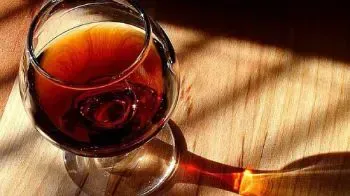Fortified wines are wines that stand out for the level of alcohol that comes from musts whose fermentation was interrupted by wine spirit. They are distinguished because they have a high sweetness and a high alcohol content (up to 22% by volume, but are usually between 18 and 20%), which at the same time requires the presence of acids to guarantee a balance of flavor.
History of Fortified Wine
In the beginning, the fortification of wine served to help store them on the ships during the long voyages, which went from where they were produced to the final destination, which was normally England.
It is important to note that the fortification of wine helps to increase the alcohol content of wine, but also produces a set of very important sensory changes.

Fortified Wine Characteristics
There are several fortified wines known worldwide. In Portugal there is Port Wine, Madeira Wine, Moscatel de Setúbal, and Carcavelos Wine. In Italy the classic Marsala, which was created in the 18th century
- Carcavelos – Carcavelos is the name of a small demarcated region of Portugal. This type of fortified wine, produced there, results from the blending of “abafado” wine with dry wine. This type of fortified wine is at serious risk of extinction.
- Madeira – produced on Madeira Island, in Portugal. It varies in degree of sweetness and alcoholic content according to the variety that was used in its production.
- Moscatel – produced in the Setúbal Peninsula, in Portugal. Obtained through Moscatel or Moscatel Roxo grapes. It has a golden color and its aromas reveal floral and fruity notes.
- Porto – produced in the Porto and Douro Region, in northern Portugal. It has a high alcohol content (19 to 22%), in a wide range of sweetnesses and a great diversity of colors.
- Marsala – it is an Italian specialty from the south of the country. It is classified by color and age, with sweet and dry varieties.
- Jerez – produced, as its name implies, in Jerez de la Frontera, Spain. It can be totally dry, totally sweet or totally oxidized.
To make this special nectar, a base wine is used, which can be fortified using two methods: adding alcohol to the must before or after fermentation, or interrupting fermentation to add alcohol. The most common is to add the alcoholic mixture during the fermentation process. In this case, the alcohol can be ethyl, brandy or wine alcohol from other wines.
Durability of Fortified Wine after opening
After opening a bottle of fortified wine, the ideal is to drink it at the moment, since it loses its characteristics quickly. The older it is, the more sensitive it will be to the oxygen in the air.
All open bottles of fortified wine must be stored in the refrigerator in an upright position.
Most used grape varieties in Fortified Wine
It is difficult to say for sure which grape varieties are used to make this type of wine since they are produced through various grape varieties.
The simplest fortified ones to be characterized through the grape varieties are Moscatel, because as the name indicates it is made through the grape varieties Moscatel Roxo or Moscatel. Madeira wine is usually produced with the Malvasia, Sercial, Boal and Tinta Negra varieties.

Ideal temperature for drinking Fortified Wine
The ideal temperature for drinking a fortified wine is between 16ºC and 20ºC.
Pairing with food
Combining fortified wine with food is not always easy because it depends a lot on the type of wine we are drinking. They are usually drunk as an aperitif or as a dessert. Some types of cheese, nuts, fruit tarts or even some desserts based on cream or chocolate are great partners to accompany with a fortified wine.

You can find fortified wines on our website: click here.
 Portugal
Portugal Spain
Spain France
France Germany
Germany United Kingdom
United Kingdom Monaco
Monaco



